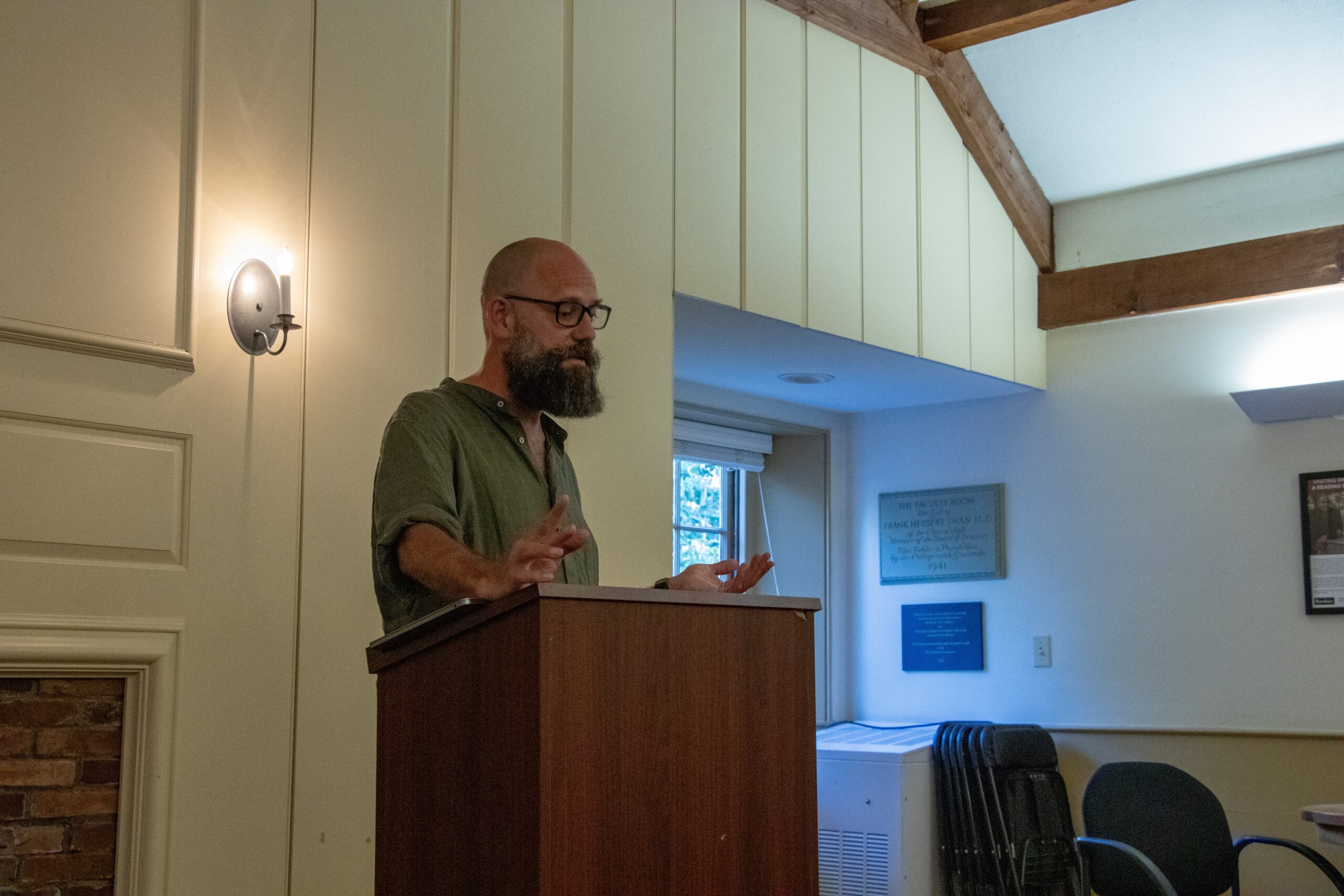Jonathan Skinner on ecopoetry, cultural tradition and the Bachman’s warbler
September 20, 2024
 Isa Cruz
Isa Cruz
Skinner started writing about Bachman’s warbler as part of a project called “Delisted 2023.” A group of poets, organized by writer and attorney Jennifer Calkins, were each assigned a species that had recently gone extinct after being on the U.S. Fish and Wildlife Service’s list of endangered or threatened wildlife.
Skinner delved into the complicated history behind the Bachman’s warbler, which was discovered in 1823 and last sighted between 1958 and 1988. Its name was bestowed by John James Audubon after minister and naturalist John Bachman in 1833. Bachman was a slaveholder, and his household was used as a base of operations for Audubon’s expeditions in Florida.
“The American Ornithological Society has announced that it will now change the English names of species named after people,” Skinner said. “But changing names does not change the facts with or against which history is made and remade. It would be a mistake to disentangle a species from the human histories of which they are and have been entangled, to erase erasure with erasure.”
In his study of the Bachman’s warbler, Skinner emphasized the historic connection between birdsong and poetry through troubadour poetry.
“As a poet, I am particularly concerned by songbird extinction in our time. The Bachman’s warbler is the only songbird known to have recently gone extinct in North America,” Skinner said. “More than simply a topos or troubadour poetry, the innovations of the spring chorus provided formal models.”
Skinner read a number of troubadour poems both in Old Occitan—the language they were originally written in—and his own English translations. The language was popular in medieval southern France, but after Napoleon banned its teaching, Old Occitan faded away.
Skinner’s experience studying the Bachman’s warbler led him to a larger conversation about what objects receive cultural or literary significance and why.
“Perhaps because warblers spend so little time with us, and because they are so hard to see, they have recruited relatively little of these cultural traditions,” Skinner said. “I would like to change that.”
Only two recordings of the Bachman’s warbler are known to exist, amounting to just six minutes of audio.
“It’s these minute differences of attention that lead me to suspect that the Bachman’s warbler may only have been known to modern science, and that in mourning the loss of [Bachman’s warbler], we are, in a sense, mourning the loss of an artifact of our own attention,” Skinner said.
Skinner added that the lack of documentation on the Bachman’s warbler may serve as a warning for future extinctions and how those species are recorded.
“As pre-echos of an increasingly likely future soundscape, the disappearance of the Bachman’s warbler warns of greater gaps in silences.”
Assistant Professor of English Samia Rahimtoola first encountered Skinner’s work as an undergraduate. She was inspired to bring him to campus because Bowdoin students are often interested in ecopoetry as a genre and because Skinner’s work is so heavily focused on research.
“The way [Skinner] writes poetry punctures a lot of myths we have around what poets do and how they write,” Rahimtoola said. “He goes really deep into the history of ‘How did this bird get its name? What does that name tell us about?’ He won’t just mention a bird in his poem. It’s going to be a particular bird with a particular history and a particular kind of history of scientific study attached to it.”
She added that she hopes students are inspired by Skinner’s interdisciplinary approach.
“Poetry can be written in many different ways.… [It] can involve a real kind of deep knowledge of science and of the particulars of ecology, and that is still part of an imaginative experience,” Rahimtoola said. “I think we so often make this division between the imagination and the real, or the poetic and the scientific. And I feel like he really challenges that.”

Comments
Before submitting a comment, please review our comment policy. Some key points from the policy: